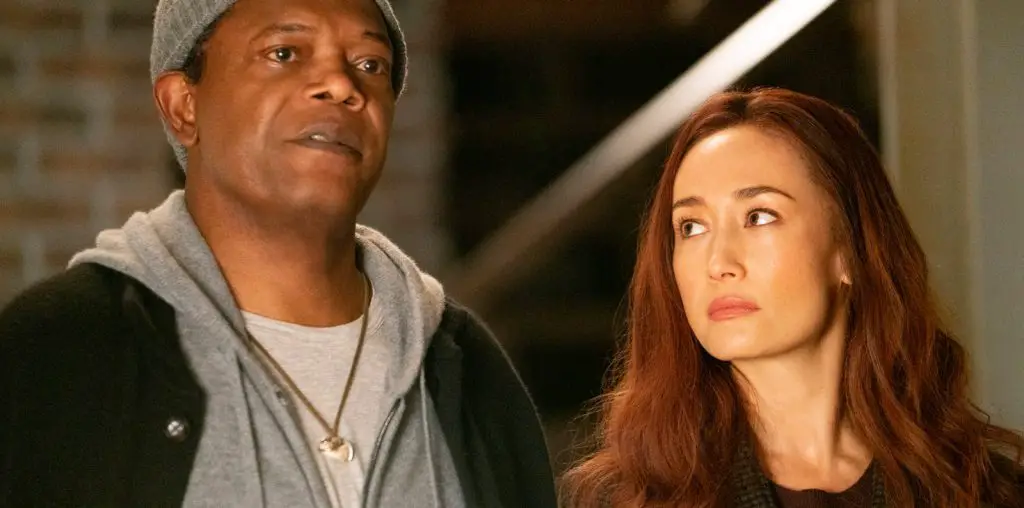
No, this isn’t a pack of public-domain Lugosi titles showing up in drug stores and free websites. (You can pick up “The Devil Bat” or “The Human Monster” with change from a magazine purchase.) In this collection we get Lugosi’s Universal titles following “Dracula” (1931) and leading up to his eponymous character opposite Larry Talbot (“The Wolf Man,” 1941). These minor classics have been unavailable on DVD until now, and what a treat it is that they’ve arrived together in a slick little digipak, especially for you “Legacy Collection” owners. While officially the “Bela Lugosi Collection,” this set is mostly “Lugosi meets Karloff” where the two square off to upstage each other. Here fans get just what they want: Bela alternating from stern grandeur to Guignol camp. He still speaks phonetically a la “Dracula” in these films, but his dialogue rings like a steel drum throughout. And Karloff, in four varied roles, never gives Lugosi a rest.
The first in the set, “Murders in the Rue Morgue” (1932; having no resemblance to the Poe work, like “The Black Cat” and “The Raven”) stars only Bela as a bushy-headed, uni-browed Dr. Mirakle, who presents Eric the Ape Man (mostly ape) at a carnival. Like Dr. Caligari’s somnambulist, Mirakle’s attraction is a cover-up, in this case to kidnap women, inject them with ape blood, and prove humankind’s kinship to beast. If they can’t prove his theory, he discards them like rotten meat. Dr. Mirakle has found a genetic match in Camille (Sidney Fox) when her medical student-finance has revealed the plan and goes to save her. Lugosi shares screen time with straight players vying for laughs (occasionally worthy), and this one has enough looming sets and cringing innocents to take on F.W. Murnau. Karl Freund (‘The Mummy”) was on cinematography, and a young John Huston contributed dialogue.
“The Black Cat” (1934) bears even less resemblance to its namesake Poe tale, as the title points only to Dr. Vitus Werdegast’s (Lugosi) paralyzing phobia. Werdegast travels to Hjalmar Poelzig’s (Karloff) castle to find his wife and daughter after fifteen years. Having been imprisoned there with his family, Werdegast comes off vengeful as soon as he’s onscreen. In this, the first Universal team-up of Karloff and Lugosi – and arguably the best – the former has the edge as a satanic architect with a museum of dead women and a supply of black felines. He presides over rites on a Caligari-esqe altar, and becomes the canvas (literally) for Lugosi’s vengeance.
In “The Raven,” however, Lugosi has a steady edge over his co-star. Bela is Dr. Vollin, a Poe freak with a priceless collection of the author’s works and his own “Pit and the Pendulum” in the basement. This Lugosi mad doctor performs plastic surgery resulting in that ol’ conceit of classic Universal horror: bodily deformity means moral depravity. So enters Karloff, as convict Bateman in need of a permanent disguise, whom Lugosi deploys to help trap Jean Thatcher (Irene Ware) into love, or else. And Vollin won’t think twice about using his medical expertise on Bateman to increase his returns, and then laugh at the results, in a room full of mirrors to boot. While Karloff offers his macabre best, Lugosi climaxes with an over-the-top lunacy (yes, with those deep, mad-doctor cackles). And it all ends in apt Poe fashion.
Those fans of the Karloff/Lugosi Poe titles will find quite a treat in the lesser-known “The Invisible Ray” (1936). This one rejects gothic for a heavy dose of late-night Sci-Fi and some African jungle. Karloff takes up the mad doctor role as Janos Rukh, an astrologist who channels light rays from space to capture images of the past. (His in-depth explanation in a laboratory may have provided Rod Serling with an idea or two.) After finding deposits of these rays on earth, he becomes contaminated by them, looking something like a glowing mime in the dark. But Rukh’s procedure proves to cure blindness, and when Dr. Felix Benet (Lugosi) capitalizes on the discovery, the innovator turns to murderous revenge. While Lugosi’s suits well in a supporting role, Karloff pulls this one off by injecting his mad scientist with the eerie outcast treatment he used as Bateman in “The Raven.”
The last and least of the bunch, “Black Friday,” mixes Jekyll and Hyde with the gangster genre for mostly awkward results. Again the mad doctor, Karloff plays Dr. Ernest Sovac, who saves his friend by transplanting part of a gangster’s brain (and not even an “Abnormal” label to be found anywhere). After awakening, the patient takes on the criminal’s identity and follows his ways. Karloff uses the new personality to find hidden loot, which brings the rest of the gang after them, including a barely used Lugosi. While benefiting from updated camerawork and editing, this film uses diary titles and other pacing techniques that become tedious. In fact, this film lacks the Universal horror pace that succeeds in the others collected here.
This collection depicts the two stars developing their horror personas, and while they just can’t match the power of their respective signature roles, there’s plenty of fun along the way. This set lacks extras save two trailers, likely since all five titles are packed onto one disc. Do not confuse this set with the “Monsterfest” Lugosi collection – you can find those titles in the $3.99 bin.
